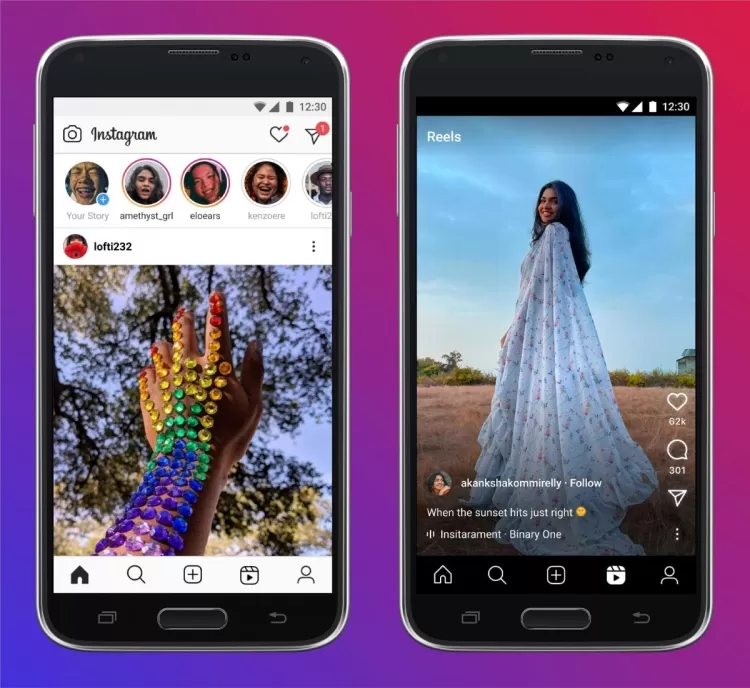"Capture the moment, share the story."
Instagram has come a long way from its initial purpose as a photo-sharing app. It has transformed into a dynamic platform that influences culture, shapes business practices, and plays a major role in global conversations. While it faces challenges, Instagram’s ongoing development ensures it will remain a dominant force in the digital landscape for the foreseeable future.

Instagram has become one of the most influential social media platforms worldwide. Since its launch in October 2010 by Kevin Systrom and Mike Krieger, it has experienced explosive growth and radically changed the way people engage with visual content. Originally designed as a photo-sharing app, Instagram has grown into a multimedia platform featuring images, videos, stories, and interactive elements. This transformation has solidified its place as a key player in the digital era and the social media space.
Beginnings and Expansion
Instagram was initially envisioned as a mobile app for sharing photos with friends. A key feature that set it apart was its filters, which allowed users to quickly enhance their photos, contributing to its rapid appeal. By 2012, just two years after its debut, Facebook (now Meta) acquired Instagram for about $1 billion. This acquisition was pivotal, providing Instagram with the resources needed for rapid expansion. With Facebook’s financial support, Instagram gained advanced technologies, new marketing capabilities, and access to a larger audience. By 2013, Instagram had reached 100 million monthly active users, marking its meteoric rise.

Feature Evolution
Instagram has continuously added new features to meet changing trends in social media and evolving user demands. In 2013, Instagram introduced the ability to upload videos, offering users a new way to engage with content. In 2016, the introduction of Stories allowed users to share ephemeral content that disappears after 24 hours. This feature proved to be revolutionary, quickly becoming one of Instagram’s most popular tools, enabling users to post less-polished, more spontaneous content.
Instagram expanded further with additional features such as direct messaging, IGTV for long-form videos, and Reels to compete with TikTok’s short-form videos. The platform also adjusted its algorithm to prioritize engaging content, making Instagram more personalized and, at times, addictive.
In 2018, Instagram launched Instagram Shopping, allowing users to buy products directly through the app. This integration of e-commerce into social media turned Instagram into a hub for both social interaction and online shopping, empowering brands to target consumers more effectively within the app.
Cultural Impact
Instagram’s influence stretches far beyond being a mere social platform. It has reshaped culture, trends, and even business practices. The rise of “influencers” on Instagram, where individuals with large followings promote products and lifestyles, has become a cornerstone of digital marketing. Brands now dedicate substantial budgets to influencer collaborations, making it an essential element of modern advertising.
Moreover, Instagram has significantly impacted beauty standards, fashion trends, and lifestyle ideals. While this has fostered more visibility and diversity, it has also drawn criticism for promoting unrealistic beauty norms and a curated, idealized version of life. The widespread use of edited images has raised concerns over mental health and body image, particularly among young users. In response, Instagram has introduced features like hiding "like" counts to reduce pressure on users to meet these unrealistic standards.

Additionally, Instagram has played an essential role in social activism, providing a platform for marginalized voices and raising awareness of important causes. Movements such as #BlackLivesMatter, #MeToo, and #ClimateAction have leveraged Instagram to organize and rally support. The app’s ability to share information in real-time has amplified voices that might otherwise be overlooked in traditional media outlets.
Instagram as a Business Tool
Instagram has evolved into a digital commerce powerhouse, with over 2 billion active users by 2024. Businesses now have a unique opportunity to reach potential customers through Instagram's extensive user base. The platform’s targeted advertising tools allow businesses to direct ads to specific demographics based on interests, behaviors, and other criteria, making it an ideal platform for advertising.
Influencers, brands, and small businesses alike use Instagram for marketing and sales. The introduction of shoppable posts made it easier for users to purchase products directly from the app, bypassing the need for external websites. Instagram’s algorithm, which emphasizes engagement, also helps brands get their content in front of more users, boosting their visibility.
Privacy Concerns and Challenges
Despite its success, Instagram faces significant challenges related to privacy, data security, and mental health. The platform has faced criticism for contributing to the spread of misinformation, cyberbullying, and harmful content. Like other social media platforms, Instagram has been accused of fostering addiction and negatively affecting users' well-being, particularly among teenagers.

In response to these concerns, Instagram has rolled out measures to combat harmful content, including tools to report inappropriate posts and restrictions on certain accounts interacting with minors. Additionally, the platform has experimented with hiding likes and comments to alleviate social pressure and promote a healthier experience for users.
Looking Ahead: The Future of Instagram
As Instagram continues to evolve, it seems likely to focus on providing even more immersive and interactive experiences for its users. The future may involve deeper integration of augmented reality (AR) and virtual reality (VR), offering users innovative ways to connect and engage with content. Additionally, Instagram is expected to further expand its e-commerce features, blending shopping with entertainment and social interaction in new ways.
What's Your Reaction?

















